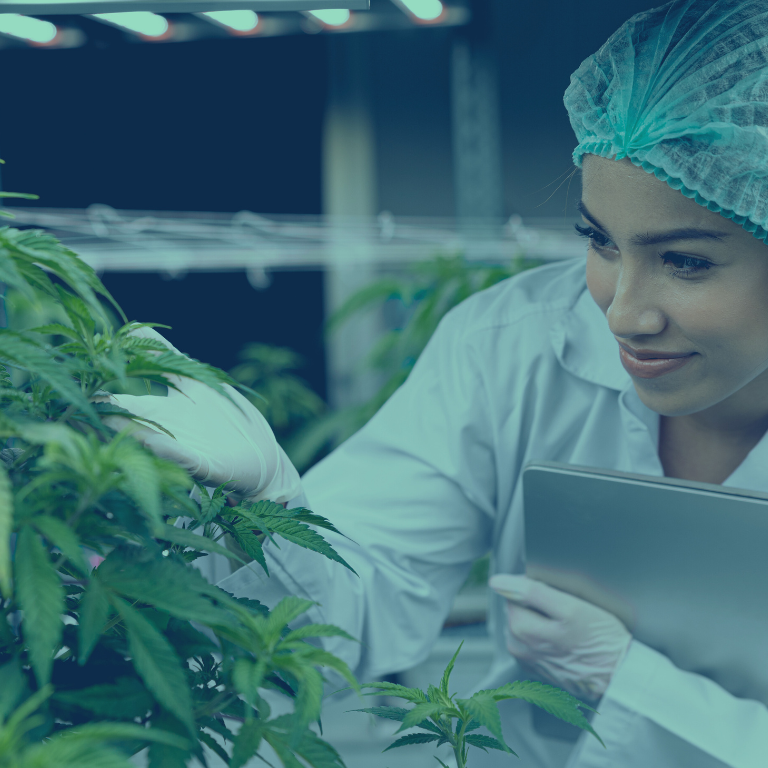Futureproofing Your Cannabis Facility for Operational Efficiency

The cannabis industry is fiercely competitive, with consumers having more choices than ever before. Businesses must capture market share, stand out on crowded shelves, create products that customers desire at affordable prices, and build a resonant brand. Achieving these goals hinges on operational efficiency, a key factor in producing high-quality, consistent cannabis at competitive costs. This article explores how to futureproof your cannabis facility for operational efficiency.
What Is Operational Efficiency?
Operational efficiency is the metric that determines a business’s ability to remain competitive. Simply put, it’s about minimizing the cost of production per unit of output. For example, if it costs you $700 to produce a pound of cannabis and your competitor only $500, they can sell at a lower price, putting you at a disadvantage. Operational efficiency ensures you remain cost-competitive, scalable, and profitable. Lower production costs increase margins and profitability, enabling reinvestment in the business.
Optimizing Your Operational Efficiency
To optimize operational efficiency, it’s essential to understand how to measure it. While there are various perspectives, several key elements universally contribute to operational efficiency:
Measuring Productivity
Productivity can be seen as a ratio of measured outputs to measured inputs. Key Performance Indicators (KPIs) specific to a cannabis cultivation facility’s business model should be established and monitored to optimize productivity.
Key Considerations
- Grams per Canopy Square Foot: The more grams produced per square foot, the more efficient the facility.
- Price per Pound: Operational efficiency impacts the cost per pound of production, affecting overall profitability.
- Consistency: Consistent production quality builds customer confidence and market stability.
- Facility Design: Efficient room utilization is crucial for optimizing operational efficiency.
- SOPs and Environmental Control: Standard operating procedures and proper environmental control minimize waste and maximize productivity.
- Mechanical Efficiency: Efficient use of machinery and technology can significantly reduce operational costs.
Powerful Takeaways for Resource Allocation
The production frontier represents the maximum attainable output when available inputs are used optimally. Reaching this frontier means leveraging production technology to its fullest potential.
Technical Efficiency
Balancing the benefits of technology can be challenging. For example, high PPFD lighting can increase production but also requires more energy. Technical efficiency involves balancing inputs and outputs to maximize productivity.
Land Productivity
In cannabis cultivation, land productivity translates to cubic room utilization and revenue generated per unit of “land.” Maximizing land productivity involves ensuring that no space is wasted, akin to having a tenant that pays rent for every square foot.
Labor Productivity
Effective training, management, and tools for employees are essential. Labor productivity can be measured in grams produced per hour of labor. Automation plays a critical role in reducing errors and freeing up skilled labor, thus minimizing risk and increasing production.
Capital Productivity
Efficient capital allocation in design, retrofit, or ongoing management phases is vital. Capital productivity is the volume of output relative to the volume of capital input. Properly allocated capital can lead to discovering new, efficient ways to produce cannabis, while poor allocation can result in significant losses.
Ensuring Consistency
Consistency in cannabis production is crucial for building customer confidence and maintaining market share. A great batch of flower alone will not make a business successful; consistent production quality is key. Implementing SOPs and maintaining strict environmental controls ensure consistency.
Leveraging Technology for Efficiency
Technological advancements can significantly improve operational efficiency. Automated systems for watering, lighting, and environmental control reduce labor costs and increase precision. Investing in advanced technologies, while initially costly, can lead to long-term savings and efficiency gains.
Data-Driven Decision Making
Accurate data collection and analysis are fundamental to operational efficiency. Understanding data sources, collection methods, and their impact on performance goals is essential. Without a deeper assessment of technology, labor, capital expenses, and room utilization, a cannabis business cannot thrive in the evolving industry.
The cannabis industry is not just a science experiment; it’s a serious business with many unknowns. To succeed, businesses must focus on operational efficiency, leveraging data, technology, and strategic resource allocation. By understanding and implementing these principles, cannabis facilities can achieve the quality, consistency, and profitability needed to become established brands in a competitive market.
Futureproofing your cannabis facility for operational efficiency ensures you remain competitive, scalable, and profitable, ready to adapt to industry changes and consumer demands.











